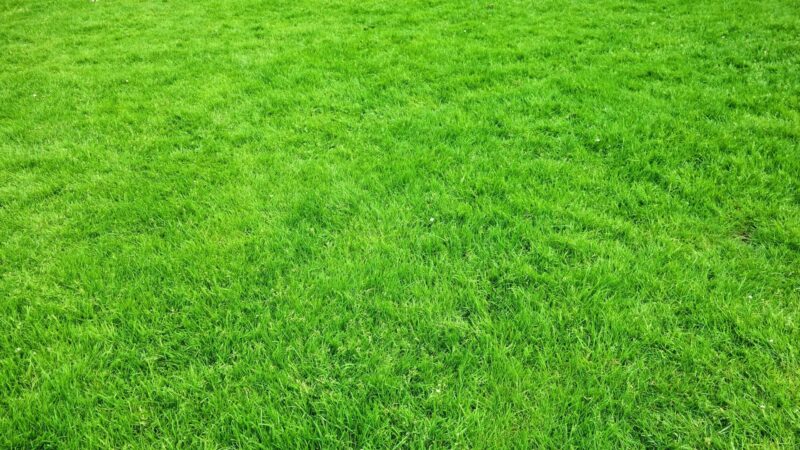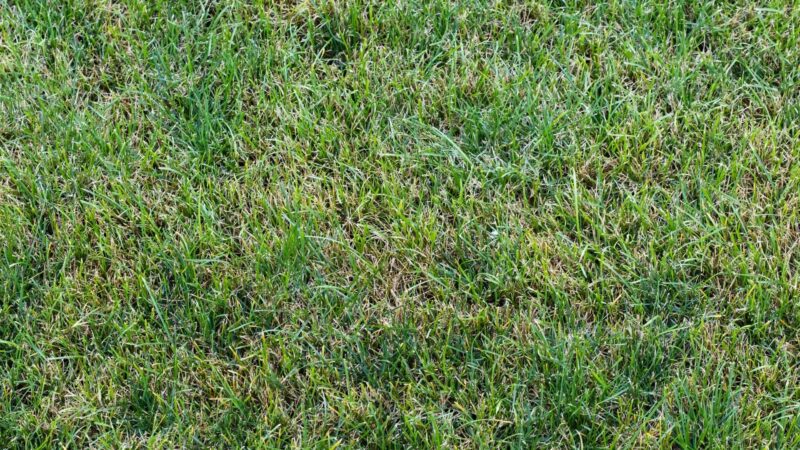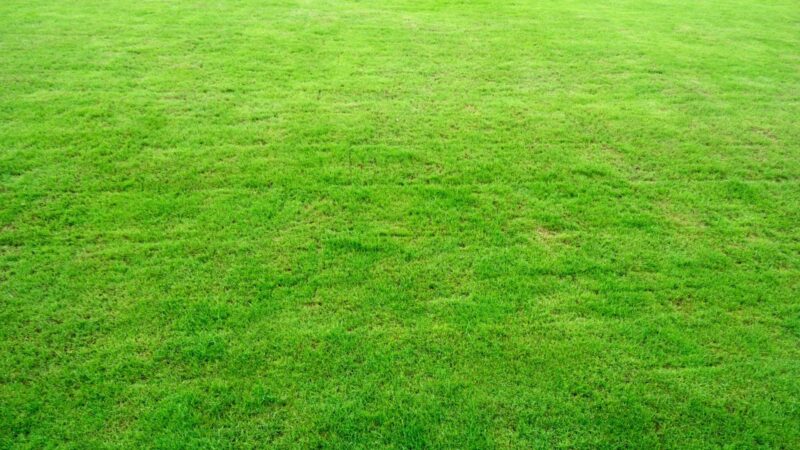Zoysia grass produces a thick but cushiony turf ideal for residential lawns, golf courses, roadsides, sports fields, and commercial landscapes. They are virtually resistant to drought, cold temperatures, and wearing and tearing. When fully established, it gives your lawns a lush green appearance.
To plant and grow a zoysia grass, prepare the soil by performing rough grading and applying fertilizer, lime, and other organic soil amendments as recommended by a soil test. Then, the zoysia grass should be established through sodding, plugging, or sprigging. Lastly, proper management must be observed by fertilizing, watering, mowing, and controlling weeds to ensure optimal growth is achieved.
For more details regarding zoysia grass, what are its best types, what conditions must be fulfilled for them to grow, how to eliminate them, and other interesting information, read further this article!
What Is Zoysia Grass?

Zoysia grass is a vigorous warm-season grower that produces a densely-vegetated but attractive and fine-textured lawn. It turns brown during the first fall frost, remains dormant throughout the winter season, and gives off its original lush green color in the spring, summer, and early fall seasons.
- Scientific Name: Zoysia spp.
- Common Names: Lawn grass, Japanese lawn grass, Korean lawn grass, Manila grass, mascarene grass, prickly couch
- Appearance: Depends on the species but generally, zoysia grasses have smooth leaf blades with some hair near the base, sharply-pointed margin blades, and slightly flattened leaf sheaths.
- Origin: Southeast Asia
- Indoor or Outdoor plant: Outdoor plant
Is Zoysia Grass Good For You?

Zoysia grasses are ideal lawn grasses and are usually used on parks, golf courses, and athletic fields due to the highly adaptable characteristics that allow them to grow in virtually all kinds of soils, from clays to sands and from acidic to alkaline. During its dormant season, it does not require lots of water, and it’s also resilient enough to survive the winter season.
However, zoysia grass is a high-maintenance turf grass that requires constant fertilization and a good weed management system in place, as they tend to grow slowly, depending on the season they’re planted.
What Are the Best Types of Zoysia Grass?
Japanese Lawngrass (Zoysia japonica)
Also referred to as Korean lawngrass or common zoysia, this species is commonly used for lawns or general turf areas such as commercial landscapes, sports fields, and roadsides. This species has the fastest growth rate, is the most resilient against cold climates, and is the only one with commercially available seeds.
Japanese lawngrass grows best when they’re vegetatively propagated (i.e. plugged or sodded) rather than when planted as seeds. Its leaves are coarse-textured, light green in color, and 0.5 to 5 millimeters wide.
When growing this zoysia species, watering with 60% evapotranspiration (ET) can give optimal growth results. It’s also water efficient but requires full sunlight as it doesn’t grow well in shaded areas.
Manila Grass (Zoysia matrella)
This species is used in nearly 2,000 golf courses in Japan and hundreds more in other Southeast Asian countries. It’s best grown in tropical and subtropical areas since it is relatively intolerant to cold temperatures.
When fully grown, it becomes a high-quality turf grass but will require frequent maintenance. It’s characterized by narrow leaves, about 2 to 4 millimeters in width, with tufts of hair on its sheath margins.
Manila grass grows slowly, which means it’s better to plant it by plugging. For fertilizer applications, it requires 3 to 5 a year with added potassium in cooler climates. When watering, it needs about three-quarters to an inch of water, with drying-out periods in between.
Mascarene Grass (Zoysia tenuifolia)
Of all the zoysia grass species, this is the densest but the most fine-textured grass. It’s usually used for low-growing, ornamental specimen plants in gardens that are Asian-themed. This grass is also characterized by its resistance to wearing but has poor tolerance to colder climates.
This zoysia grass has a slightly puffy appearance as it forms small but excessive clumps and thatches, making it less ideal to plant on lawns. It has leaves that grow up to less than 5 millimeters in width. If you need a low-growing ground cover, this is the best choice for you.
Growing this species requires patience as it establishes extremely slowly. Due to the stiffness of its blades, it’s not easily mowed compared to other zoysia grass. Fortunately, the grass requires only a few mows a year.
Where Does Zoysia Grass Grow Best?

Will Zoysia Grass Grow in Shade?
Zoysia grass has a light to moderate tolerance to shade, which means it can grow well in partially shaded areas. Cultivars of manila grass particularly have excellent shade tolerance. Avoid placing them in densely shaded areas, as they can thin out.
Will Zoysia Grass Grow in Sand?
Zoysia grass will grow in sand, but it is generally not advisable as sandy soil can’t hold moisture well since it dries out and drains fast. Also, it will require more fertilizer, organic matter, and potassium applications, especially during the rainy season, which may be costly and time-consuming for most gardeners.
Will Zoysia Grass Grow in Clay Soil?
Zoysia grass will grow in clay soil. Clay soils can hold moisture for longer periods, but they may stay excessively wet, resulting in waterlogged soil, which will be bad for the growth of the zoysia grass as it will be difficult for its roots to sequester oxygen. However, it is an ideal soil type as it requires lower amounts of fertilizer, potassium, and water.
Will Zoysia Grass Grow in Full Sun?
Zoysia grass achieves optimal growth in a low-maintenance lawn when receiving about 6 to 8 hours of full sunlight and being planted in partially-shaded areas. This is because zoysia grass is a warm-season grass that’s mostly accustomed to tropical and subtropical climates.
However, they can become dormant during drought or when there is an absence of proper irrigation or rain. During their dormant stage, they turn tannish-brown. Fortunately, this lasts for only about a week.
When to Grow Zoysia Grass?

Zoysia grass is best planted during late spring and early summer, specifically from mid-May through June, when it’s in its early growing season. In this period, zoysia grasses can achieve the necessary moisture and nutrient requirements.
Later plantings may not be completely established before the winter season starts, which may increase the plant’s vulnerability to winter injuries. However, planting outside the best time range can still be done as long as you observe proper irrigation to prevent the desiccation of the grass.
When Does Zoysia Grass Start Growing?
Germination of zoysia grass generally occurs 10 or more days after planting the seeds. However, when planted under optimum temperature and soil moisture conditions, it can start as early as 7 days and take up to 15 days to grow sprouts in the space they’re planted in.
This is why it’s important to plant before the summer season, as the rate of germination increases as the temperature also increases.
How Fast Does Zoysia Grass Grow?
Established zoysia grass in a seedbed, depending on its soil conditions, can start growing substantial sprouts 15 days after seeding and take up to 90 days to fully spread throughout the space they’re planted in. However, the growth rate depends on how expansive the lawn area is.
Under ideal environmental and growing conditions, they can grow in just one season. However, the time it takes for zoysia grass to fully grow is usually 2 to 3 years. In some cases, such as when they’re planted into an existing lawn, a full establishment may reach up to 5 or more years.
How Do You Plant Zoysia Grass?
- Soil preparation. Perform rough grading and apply fertilizer as recommended by a soil test. You can also choose to apply lime and other organic soil amendments when necessary. Till the aforementioned materials into 4 to 6 inches deep within the soil and finish grading.
- Establishment. Generally, zoysia grass is best grown when vegetatively established by sodding (laying sods on a sufficiently moist sodbed), plugging (inserting small sods 6 to 12 inches into the soil before adding a starting fertilizer on the soil surface), and sprigging (placing the rhizome, stolon, roots and leaves of the zoysia grass into the soil, at rows that are 6 inches apart).
- Fertilizing. Zoysia grass requires only a seasonal total of 2 pounds of nitrogen fertilizer per 1,000 square feet. However, make sure to do a soil test before seeding, as it will indicate how much fertilizer your soil needs, as well as other nutrient deficiencies and pH levels.
- Watering. Zoysia grass is tolerant to drought, which means they require less water to grow, even in the summer months. When watering, water in the early morning and make sure you reach a depth of 4 to 6 inches into the established grass. When experiencing prolonged dry periods, constant watering is necessary.
- Mowing. Depending on the height you wish to achieve, zoysia grass needs to be mowed to remove dead leaf tissues, increase the greening rate of the plant, and allow the grass to grow uniformly. Usually, a half inch is all you need for mowing, but you should increase it to 1 inch as the fall season approaches.
- Weed Management. Applying weed preventers in the early spring will help reduce the growth of weed populations. However, zoysia grass is usually resilient against and competitive towards weeds.
How Can I Grow Zoysia Grass?
Simply follow the above procedures in planting zoysia grass, and you will be ready to go. It is important to emphasize that zoysia grass are slow growers and are rather difficult to eliminate once they have been fully established.
What Helps Zoysia Grass Grow?
Watering an inch deep at 2 to 3 times a week during mid-summer maintains the zoysia grass growth rate. Irrigation should increase during dry winter months to avoid the risk of desiccation and loss of stand.
Applying a moderate level of soluble nitrogen fertilizer during the growing season will help regulate the turf’s color and density. In residential lawns, you should apply 2 or 3 times.
Lastly, frequent mowing can produce fine-textured zoysia grass turf, preferably every 3 to 7 days depending on the area where they are planted. When mowed less frequently, scalping can occur and result in poor-quality turf.
How to Take Care of Zoysia Grass?
- During the spring season, apply fertilizer after the zoysia grass has achieved its green-up. Remove wild onions using the appropriate weeding tools while the soil is most after raining. Mow thatches that build up using a vertical mower or a core aerator.
- In the summer season, increase the mowing height to 1.5 to 2 inches for residential lawns. For athletic fields, keep it to half an inch to 1 inch. If you notice any zoysia grass blades wilting or turning into an off-green color, water the lawn immediately, as these are initial signs that they’re going into their dormant stage.
- Lastly, rake surrounding tree leaves and allow them to decompose in your lawn during the fall season. They should be inserted only about half an inch into the planted soil. At this period, the grasses will go into dormancy when experiencing the first frost of the season. Make sure not to fertilize during this time.
How Do I Know If My Zoysia Grass Is Growing?
Germination happens early on in the growing season, but you may not notice any substantial sprouting a few days after. Moreover, zoysia grass becomes dormant, or stops growing completely, during the winter season or as soon as the first frost is felt by the grass.
Why Is My Zoysia Grass Not Growing?
It may be because you don’t have the ideal soil, moisture, sunlight, and fertilizer conditions that the zoysia grass needs to grow. Another factor to consider is the time of the seeding, which significantly affects the growth rate of the grasses. When planting close to fall, it may take more time for them to sprout.
How Do You Stop Zoysia Grass From Growing?
Mix a chemical herbicide that contains glyphosate with water as instructed by the label and sprays it directly on the zoysia grass. This treatment is most effective during its growing season, around mid-summer. After application, wait around 10 to 14 days and observe if the zoysia grass was eradicated. When there are any areas that show signs of regrowth, reapply the treatment according to the label instructions.
Zoysia grass makes excellent turf due to its weather resiliency and pleasing green coloration. They can start growing as fast as 15 days. However, they become fully established anywhere from 1 planting season to 5 years, depending on their environmental conditions. To achieve optimal growth, full sunlight and proper management should be provided.